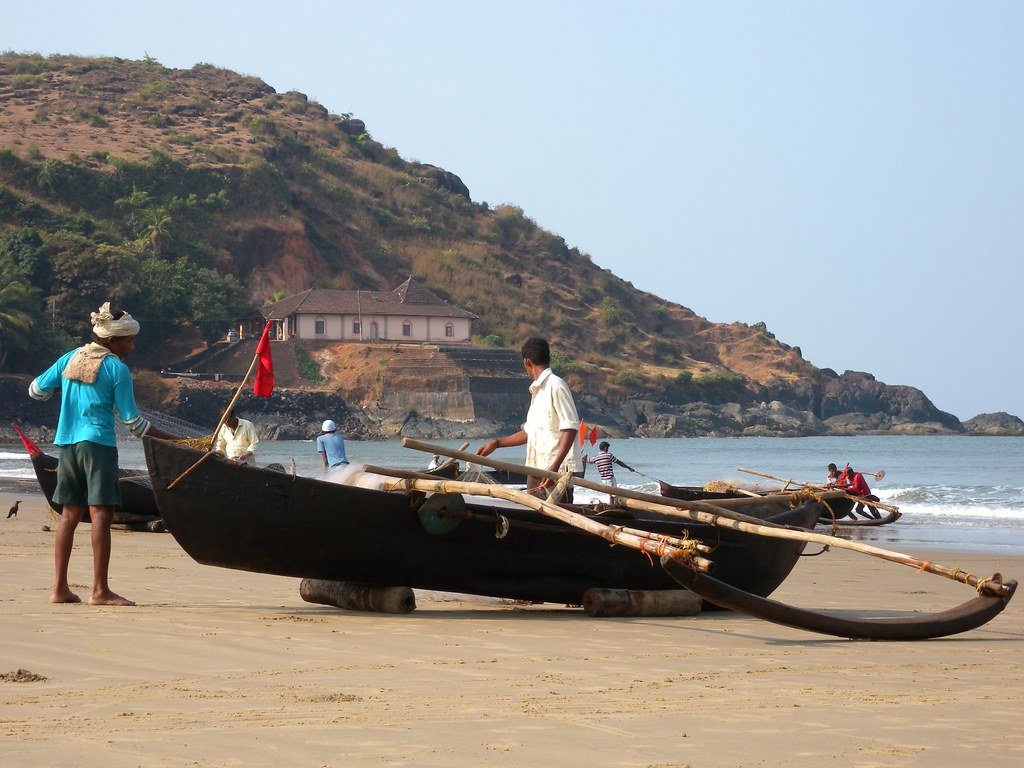
Murdeshwar and Gokarna Day Trip from Goa
WhatsApp +91 7499327876 for Booking /Enquiry
WhatsApp +91 7499327876 for Booking /Enquiry
Day 1 : Murdeshwar and Gokarna
Pick up by car between 5:00 and 5:30 am from Goa and head to Murdeshwar and Gokarna. Breakfast in Ankola town around 7:00 am. Arrive in Murdeshwar at 10:00 am to visit the 123-foot Shiva Statue, the 20-story Raja Gopura, the Sun Chariot, Murdeshwar Beach, and the Shiva Temple Complex. Then, drive to Gokarna to see the Mahabaleshwar Temple, Gokarna Beach, the temple Chariot Site, Koti Tirtha sacred lake, and Maha Ganapati temple, followed by a stroll in the Brahmin quarter. Enjoy lunch at a local restaurant on Om Beach. The tour ends with a return to the hotel around 8:00 pm.
Included
Breakfast
Car transfers
Entrance fees
Professional English speaking guide
Excluded
Personal expenses
Beverages during lunch
Lunch
Tip to guide and driver
Tour Plan
Gokarna is a Sanskrit word that translates to “cow’s ear.” Lord Shiva is said to have appeared here through the ear of a cow (Prithvi, Mother Earth). It is located at the confluence of two rivers, Gangavali and Aghanashini, which form an ear-shaped confluence. As a result, Gokarna grew in spiritual importance throughout the world.
-

Gokarna Temple Chariot Wheel
Shivaratri festival is celebrated here with great enthusiasm. The temple has two chariots - named locally as 'Dodda Ratha' (Dodda for Big in Kannada) and 'Sanna Ratha' (sanna for small in Kannada). Dodda Ratha is quite huge. While 'Sanna Ratha' is out in the open during winter and summer, the 'Dodda Ratha' is brought out and made ready only during Maha Shivaratri.
On the last day of Maha Shivaratri festival the Lord Mahabaleshwara idol is carried in 'Dodda Ratha' in a procession through the town's big Car Street, while priests and pilgrims chant hymns in praise of Shiva. More than a hundred people are needed to pull the chariots with thick ropes while priests conduct religious ceremonies inside. During the nine-day Maha Shivaratri festival, the small town of Gokarna is visited by up to 20,000 pilgrims.
-

Mahabaleshwar Temple, Gokarna
One of the best places to visit in Gokarna is the Mahabaleshwara Temple, which showcases beautiful Dravidian architecture. Built in the 4th century, this coastal town temple is renowned for housing the Shiva Linga called Atma Linga, which is worshipped passionately. Often referred to as Dakshin Kashi, the shrine is likened to the Shiva Temple in Varanasi and one of India’s seven major Hindu pilgrimage sites.
The main deity, a 1500-year-old stone-carved idol of Lord Shiva, graces this significant temple. A visit to the Gokarna Temple offers a spiritual retreat, providing a serene space to connect with the divine.
According to popular belief, glimpsing the shrine’s deity can bring great blessings. The Mahabaleshwar Temple stands as a magnificent piece of art, attracting visitors from around the globe.
-

Gokarna Priest
Gokarna has a long history of performing numerous rituals and poojas, which has only been achieved thanks to hundreds of priests and scholars through many generations.
Raja Mayooravarma, a Brahmin ruler, was responsible in bringing the first 30 or so households to Gokarna. Brahmins have a 1300-year history, and there are documented proofs of Gokarna priests and students performing various pujas such as Navagraha-purak-aghorastra-puja, Narayan bali, Kaal Sarp dosh puja, Maha Mrantuynjya Homam, pind pradhan, tripindi Shraddha, and so on, dating back to the 15th century.
The Shrimad Bhagavata Purana refers to Gokarna as the home of the brothers Gokarna and Dhundhakari. Mahabaleshwara Temple (Maha: great, bal: strong) is a well-known Shiva Temple that holds the ‘Atmalinga’ statue.
Murudeshwara is a small beach town of Karnataka state.
The epics tell an intriguing story behind Murudeshwara Kshetra. Demon king Ravan was taking Lord Shiva’s Atmalinga back to his kingdom, Swarnalanka. Fearing that Ravan might become unbeatable, the gods asked Lord Ganesha to stop him. As sunset approached, Ravan needed someone to hold the Atmalinga while he prayed. Ganesha, disguised as a small boy, agreed to help. However, Ganesha put down the Atmalinga and disappeared. Furious, Ravan tried to retrieve it, but the Atmalinga broke into five pieces, which fell in different locations. A large part landed at Kandukagiri, which became known as Murudeshwara Kshetra.
Murudeshwara Kshetra gained prominence during the Kadamba dynasty. King Mayuravarma invited several priest families from Ujjain due to their spiritual knowledge, and they settled in the Kadamba kingdom, sharing Vedic teachings. Today, Murudeshwara Kshetra is recognized for its various Homas, Pujas, and Pariharas.




